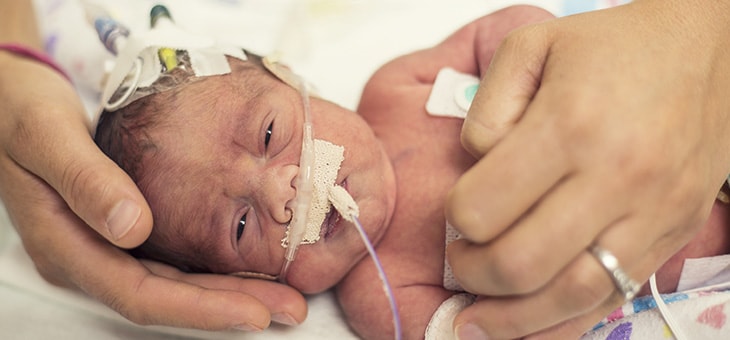Congenital asphyxia
Asphyxia is caused by a lack of oxygen and blood supply to the brain. Asphyxia occurs in the uterus or at birth or immediately. Causes of congenital asphyxia may include:

- Low oxygen levels in the mother’s blood due to respiratory or heart problems
- High blood pressure in the placenta, it can lead to placental abruption
- Failure of uterine relaxation during childbirth, which affects the circulation of oxygen to the placenta.
- Early onset of separation of the placenta from the uterus
- Problems of the umbilical cord that reduce blood flow
- Fetal anemia
- Low amniotic fluid
Due to lack of oxygen, the organs are unable to function properly. The extent of damage depends on how long oxygen is not available to the brain. If treatment is delayed, congenital asphyxia can lead to hypoxic ischemic encephalopathy (HIE), severe renal failure, and short- and long-term illness.
Birth Asphyxia Symptoms:
Symptoms of infantile asphyxia include:
- Late crying / late crying after birth
- Abnormal heart rate or abnormal muscle tone in children
- Abnormal breathing
- Neonatal seizures
- Dysfunction of certain organs
Babies with mild symptoms of congenital asphyxia recover from it as soon as the oxygen and blood supply is restored. However, if the symptoms are severe, early treatment is very necessary to prevent permanent damage to body organs.
Diagnosis of Birth Asphyxia:
Medical history and physical examination play a major role in diagnosing congenital asphyxia:
- High acid levels in the blood – less than pH 00
- Low APGAR score
- Low blood pressure
- Shortness of breath
- Low heart rate
Treatment of congenital asphyxia:
Immediate treatment is essential to prevent short-term or long-term effects on the baby. For the treatment of congenital asphyxia:
- All high risk deliveries should be referred to a center with good neonatal care
- All such deliveries must be attended by a pediatrician or neonatologist
- Follow the standard neonatal resuscitation program (NRP) guidelines in resuscitating infants
- Auxiliary ventilation
- Medications to control the baby’s breathing and blood pressure
Appropriate antiepileptics are initiated to control seizures if any.
Treatment advances for congenital asphyxia include cerebral function monitoring and therapeutic hypothermia (cooling therapy).